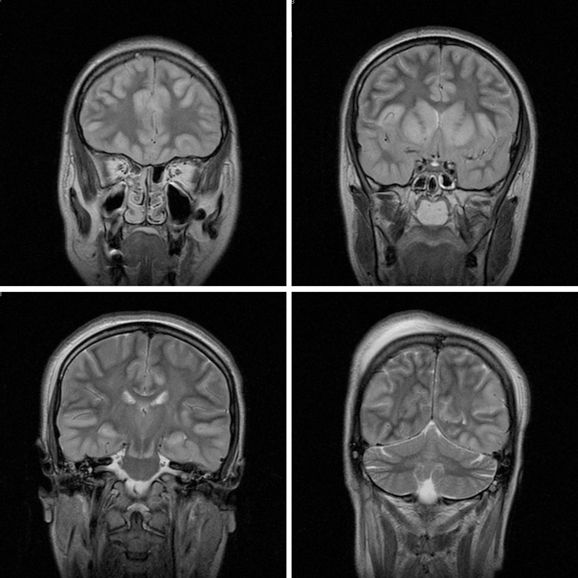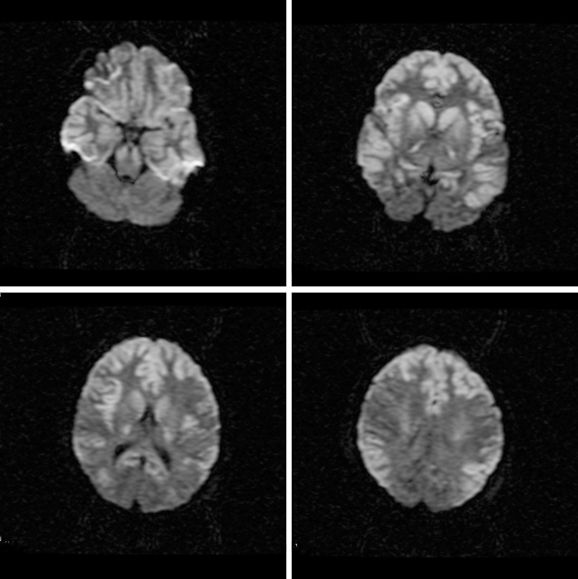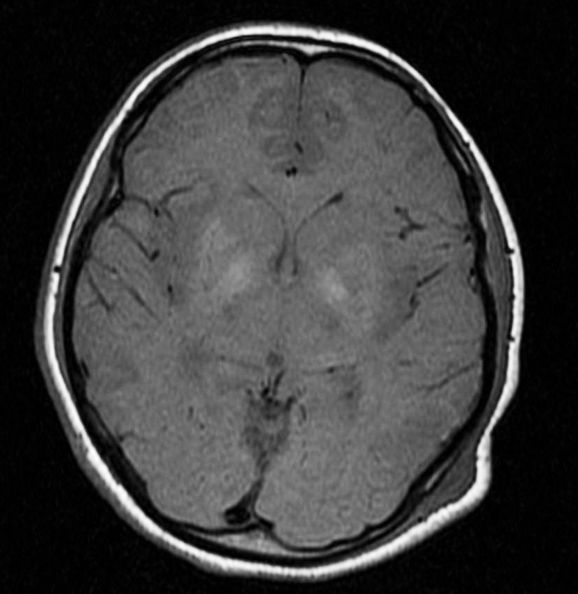MRI Findings in Attempted Hanging
This case is a 26-year-old female in whom MRI imaging was done24 hours after an attempted hanging episode.
This case is a 26-year-old female in whom MRI imaging was done24 hours after an attempted hanging episode.




In a hanging, the probable cause of death or disability is cerebral hypoxia due to compression of the neck vessels, especially the carotid arteries and jugular veins. The vertebral arteries are relatively protected in the transverse foramina and are often spared.
Here, T2W and FLAIR images revealed diffuse, hyperintense signal all along the cerebral cortex and symmetrical hyperintensity in the basal ganglia. Similar signal alteration was also present in the middle cerebral peduncles and adjacent midbrain. All these regions revealed markedly restricted diffusion consistent with acute ischemia. No signal alteration was seen in the cerebellum. T1W images revealed hyperintensity in both basal ganglia.
MRI findings after attempted hanging depend upon the time elapsed, severity and duration of anoxia or hypoxia and variables such as continued cardiac activity and body temperature variations. The acute ischemia results in disruption of the Krebs cycle and resultant cytotoxic cell edema of the brain.
In the acute stages of ischemia due to the edema, there is diffuse hyperintense signal in the cerebral cortex and basal ganglia. There is preferential involvement of the cortex and basal ganglia in hypoxic-ischemic injury. This is attributed to the high metabolic activity in these regions and the earliest areas to be affected are the occipital and peri-rolandic cortices.
Diffusion imaging is far more sensitive than conventional MR sequences for detection of early cortical changes due to its sensitivity in detecting restriction of molecular water motion. There is high signal in the basal ganglia on T1W images - presumably due to micro hemorrhages through the damaged endothelium.
Days to weeks after the hypoxic insult, T1W gyriform cortical hyperintensity may appear. These are due to cortical laminar necrosis of layers 3, 4 and 5 due to hypoxic injury. The T1 hyperintensity of cortical laminar necrosis is attributed to accumulation of denatured proteins in the necrosed layers and not due to blood degradation products.
Neuroimaging can serve an important role for prognostication of patients following hypoxic-ischemic injury and thus guide further management. Diffusion imaging in particular can accurately predict the extent of ischemic involvement in the early stages. The presence of widespread cortical diffusion abnormalities have been reported to be associated with poor outcomes.
Arti Chaturvedi, MD Senior Consultant
Department of Radiodiagnosis Fortis International Hospital, Noida, India
The Reading Room Podcast: Current Perspectives on the Updated Appropriate Use Criteria for Brain PET
March 18th 2025In a new podcast, Satoshi Minoshima, M.D., Ph.D., and James Williams, Ph.D., share their insights on the recently updated appropriate use criteria for amyloid PET and tau PET in patients with mild cognitive impairment.
Study with CT Data Suggests Women with PE Have More Than Triple the One-Year Mortality Rate than Men
April 3rd 2025After a multivariable assessment including age and comorbidities, women with pulmonary embolism (PE) had a 48 percent higher risk of one-year mortality than men with PE, according to a new study involving over 33,000 patients.